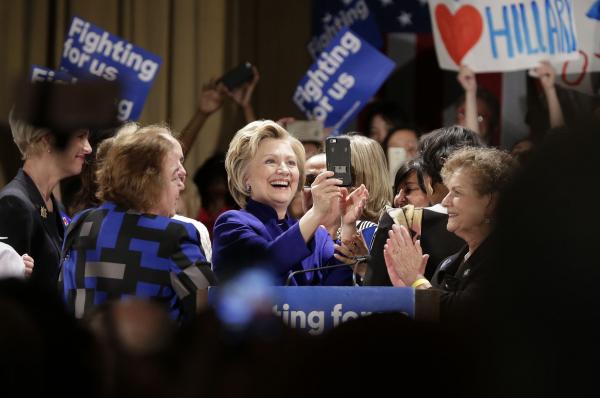
ALBANY, N.Y., April 19 (UPI) — The candidates have had their say. Now voters in New York can say, “I did it my way.”
Republicans and Democrats from New York City to Buffalo head to the polls Tuesday to help pick their parties’ nominees in what is the most consequential presidential primary to be held here in more than a generation.
And in typical New York political fashion, it’s not quite as simple as it sounds.
The parties have vastly different rules for how they will allocate their delegates, but polls show the two front-runners, Hillary Clinton and Donald Trump, both of whom call New York home, are poised to score much-needed victories. If they do, it will help right their campaigns since the second half of the electoral calendar has handed momentum to their opponents.
New York is a “closed” primary, meaning only voters who were registered as either a Democrat or Republican as of last October, are eligible to vote. Independents who show up and have changed their registration since then will be granted provisional ballots that will be reviewed by elections workers in the coming days.
Here’s what to look for as election returns come in after the polls’ closures at 8 p.m. EDT.
Democrats
New York will send 291 delegates, nearly 7 percent of the overall total, to the Democratic National Convention in Philadelphia in July. Of that number, voters will determine how to allocate 247 of them on Tuesday.
The Democratic ballot is a confusing one. It lists the two candidates, Clinton and her opponent, Vermont Sen. Bernie Sanders. It also lists the names of the delegates running to support them.
The party has previously decided how many delegates will hail from each of the state’s 27 congressional districts. The districts with the largest number of registered Democrats will send seven delegates to the convention. Districts with moderate Democratic enrollment will send six and heavily Republican districts will send five.
Whether voters will find the need to vote for their preferred candidate and their hand-picked delegates confusing remains to be seen, but doing so is crucial.
A voter can hypothetically vote for Clinton over Sanders, but select Sanders’ delegates, thereby actually helping him more. They can also pick and choose which delegates from each candidate they want to win, thereby effectively splitting their vote between Clinton and Sanders.
Elections officials expect most voters will simply go down the line for their preferred candidate.
District-by-district voting will determine how 163 delegates will be allocated. Another 84 delegates will be allocated to the candidates based on their percentage of the statewide vote. The final 44 delegates, which include elected officials and party leaders, will go to the convention unpledged.
New York Democrats also have a unique rule: The number of male and female delegates from the state must be equal.
Republicans
New York’s delegation the Grand Old Party is 95 members strong. Of the 95 delegates, 81 will be allocated by congressional district and 14 will be allocated based on how the percentage of the statewide vote for each candidate.
The golden number in New York’s Republican primary is 50 percent. If front-runner Donald Trump can win an outright majority of votes statewide, he will sweep all 14 of the at-large delegates. His opponents, Texas Sen. Ted Cruz and Ohio Gov. John Kasich, will be working hard to prevent that from happening. If they can do so, then those 14 at-large delegates will be divided proportionally between all candidates who meet a statewide threshold 20 percent of the vote.
The other 81 delegates will be decided in each congressional district. Each of the state’s 27 districts will send 3 delegates to the convention. In order to sweep all three in a given district, a candidate must win a majority of the district. If no candidate reaches 50 percent in a given district, the three delegates will be split, two to the winner, one to the loser — or, if all three candidates finish above 20 percent but without a majority, then each would receive one.
The three-delegates-per-district rule has made for some odd campaign choices for the Republican candidates.
As with most of the country, congressional districts in urban areas in New York tilt heavily Democratic in voter registration. The majority of the state’s districts are in New York City and fit these demographics. But despite the fact there are far fewer actual Republican voters, they still decide the same three delegates as voters in rural upstate New York, where Republicans outnumber Democrats three- or four-to-one.
The disproportionate sway New York City Republican voters will have in this primary is part of the reason why Cruz campaigned in heavily Democratic South Bronx, which was an unmitigated public relations disaster. It may have looked like a blunder at the time, but tactically the decision to campaign in heavily Democratic areas was a stroke of genius. Speaking to the handful of Republican voters in the Bronx got him considerably more bang for his buck — and a better chance to pick off some delegates by denying Trump a majority win there, rather than traversing the seven or eight highly conservative, rural districts that cover the vast middle portion of the state.






